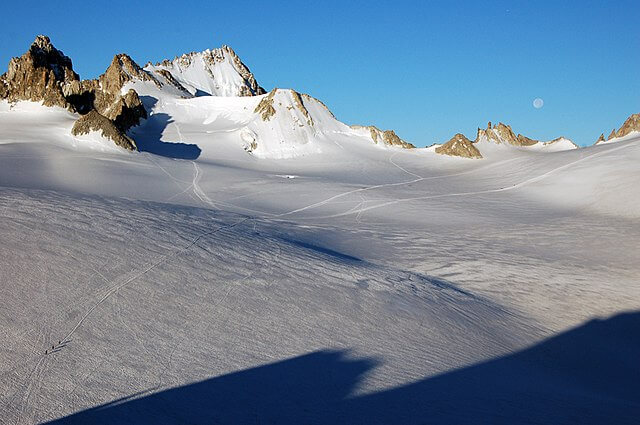
Switzerland’s glaciers have suffered a significant 4% loss in volume this year, marking the second-largest annual loss on record following last year’s record melt of 6%.
The data is outlined in the annual report of the Swiss Glacier Monitoring Network (Glamos), a team that has been observing 176 of Switzerland’s 1,400 glaciers for years. The researchers express concern that it may be too late to save many of these alpine ice fields, even if climate targets are met.
“It’s terrible,” said the Glamos chief.
In a span of just two years, Swiss glaciers have seen a 10% reduction in their total volume, equivalent to the amount they lost in the three decades between 1960 and 1990. The glaciologists responsible for monitoring the ice remain disheartened by this year’s marginally smaller melt compared to last year’s record.
“It was still the second most negative year since measurements started,” Matthias Huss, the head of Glamos, told the BBC. “It’s terrible to see that this extreme of last year is just repeating.”
The loss in volume is attributed to consecutive very warm summers and a winter with significantly low snowfall. Should these weather patterns persist, the melting will only accelerate. Some smaller glaciers in Switzerland have already vanished, leading the researchers to cease monitoring the St Annafirn glacier this year, as there was no longer any ice of value for measurement.
In the case of some of the rapidly shrinking glaciers, it is unlikely they can be saved, even if global temperatures are kept within the Paris Agreement target of limiting warming to 1.5 degrees Celsius. Without a significant reduction in greenhouse gas emissions associated with global warming, experts warn that even larger glaciers like the Aletsch, with ice that is currently 800 meters thick in certain parts, could vanish within a generation.
“Every time I come back to these sites that I have monitored for many years, it’s different,’ said Mr Huss. “The ice is smaller, thinner, more grey. It’s very sad.”
The loss of glaciers has implications beyond the aesthetic aspect. These ice formations traditionally accumulate in winter and provide a slow melt during the summer, offering crucial freshwater resources for Europe’s rivers, irrigation for crops, and cooling for nuclear power stations.
The reduced water levels in the river Rhine during the record heat of 2022 necessitated restrictions on shipping, impacting a vital waterway for Europe’s freight transport. In addition, during the heatwave, fish had to be removed from Swiss rivers and placed in tanks, as the river water had become too warm and scarce for the fish to survive. These developments underscore the far-reaching consequences of glacier loss beyond the striking vistas they provide, affecting essential aspects of ecosystems and economies.
“Glaciers are very important for communicating climate change, because they are so visible,” said Mr Huss.
“If there is no climate mitigation, we are going to lose all the glaciers in the alps by 2100.”
——————————————————————————
At Natural World Fund, we are passionate about stopping the decline in our wildlife.
The decline in our wildlife is shocking and frightening. Without much more support, many of the animals we know and love will continue in their decline towards extinction.
When you help to restore a patch of degraded land through rewilding to forests, meadows, or wetlands, you have a massive impact on the biodiversity at a local level. You give animals a home and food that they otherwise would not have had, and it has a positive snowball effect on the food chain.
We are convinced that this is much better for the UK than growing lots of fast-growing coniferous trees, solely to remove carbon, that don’t actually help our animals to thrive.
This is why we stand for restoring nature in the UK through responsible rewilding. For us, it is the right thing to do. Let’s do what’s right for nature!
Donate today at https://naturalworldfund.com/ and join in the solution!

